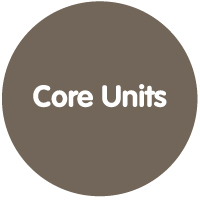Metabolism and Bioenergetics

 |
Metabolism and BioenergeticsCoordinators Other Lecturer Objectives The objectives of this CU are to review and consolidate concepts in the areas of Metabolism and Bioenergetics, focusing on the main metabolic pathways in a living cell, how they are regulated and disturbed in disease, and how energy is obtained and transduced to meet the cell’s requirements. The focus will be on bringing the students up to date on new advances in these areas and the key questions being addressed, while stressing the fundamental principles and molecules involved. Other objectives are to engage students in discussions on topics of Bioenergetics and Metabolism, have them think and raise questions, train their critical reading of scientific literature in this field, and develop skills in presentation and scientific discussion. Contents of Curricular Unit
Link between contents and objectives of curricular unit The contents were specifically designed to fit the objectives of the curricular unit. They include main topics in the field of Bioenergetics and Metabolism, aiming to give the student a broad overview of the main issues in the area, but also an integrated perspective of Bioenergetics and Metabolism across different types of organisms (animals, plants and prokaryotes). The discussion of the diversity of strategies used by the different organisms aims to define common principles, while also promoting the integration and future application of these concepts/organisms in Health, Industry, Environment and Bioenergy. A special emphasis will be put on:
The contents were also selected taking into account future CUs of the course, and the general profile and interests of the students enrolled in this PhD Program. Teaching Methodologies The course is organized in lectures, tutorials, and paper discussion/student presentations. The lectures will have an interactive format to promote discussion and interaction between the lecturer and the students and between the students themselves. For the sessions of paper discussion/student presentations each group of students will choose a topic comprising 1-3 papers, which they will have to read critically and present to their colleagues, followed by discussion. The evaluation is continuous and will take into account the participation of the student in all activities as well as his/her presentation/discussion skills. Link between teaching methodologies and objectives The methodologies are very focused in involving the student in all activities (including lectures), to generate a pro-active rather than passive attitude and promote self-learning and a critical mind-set. It is very important that the students understand that scientific knowledge is continuously evolving, and that what is written in textbooks, and even research papers, is not the “final, absolute truth”, but the current state of knowledge, which is an evolving process to which they can actively contribute. The discussion of recent papers will allow them to realize where the frontiers of knowledge in the field are, and provide training in critical reading. Student presentations will also allow training of scientific communication skills. Main Bibliography
|



